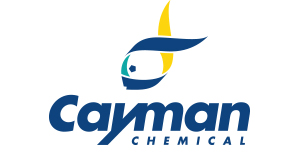TIM-4 Extracellular Domain (human, recombinant) - Biotinylated
TIM-4 Extracellular Domain (human, recombinant) - Biotinylated
SKU
CAY37098-20
Packaging Unit
20 µg
Manufacturer
Cayman Chemical
Availability:
loading...
Price is loading...
Formulation: Lyophilized from sterile PBS, pH 7.4
Purity: ≥90% as determined by SDS-PAGE
Shelf life (days): 365
Notes: TIM-4 is a type I transmembrane protein and member of the T cell immunoglobulin and mucin domain-containing (TIM) family of immunoregulatory proteins.{21964} It is composed of an N-terminal immunoglobulin variable (IgV) domain that binds to phosphatidylserine, as well as a mucin stalk, which contains O- and N-linked glycosylation sites, a transmembrane domain, and a C-terminal cytoplasmic tail, which lacks a tyrosine phosphorylation site, unlike TIM-1 and TIM-3.{15136,21964} TIM-4 is expressed in antigen-presenting cells (APCs) such as dendritic cells and macrophages and binds to TIM-1 on activated T cells.{21967} It is mainly involved in phagocytosis of apoptotic cells via recognition of phosphatidylserine, but also plays a role in T cell proliferation and survival, viral entry, and antitumor immunity.{15136,29982,67258,67259} TIM-4 targeting antibodies prevent HIV-1 entry into host cells in vitro and enhance the efficacy of anticancer vaccines in a murine melanoma model.{67258,67259} SNPs in TIMD4 are associated with increased susceptibility of asthma in children.{21966} Cayman's TIM-4 Extracellular Domain (human, recombinant) - Biotinylated protein consists of 302 amino acids, has a calculated molecular weight of 32.7 kDa, and a predicted N-terminus of Glu25 after signal peptide cleavage. By SDS-PAGE, the apparent molecular mass of the protein is approximately 60 kDa due to glycosylation.
Purity: ≥90% as determined by SDS-PAGE
Shelf life (days): 365
Notes: TIM-4 is a type I transmembrane protein and member of the T cell immunoglobulin and mucin domain-containing (TIM) family of immunoregulatory proteins.{21964} It is composed of an N-terminal immunoglobulin variable (IgV) domain that binds to phosphatidylserine, as well as a mucin stalk, which contains O- and N-linked glycosylation sites, a transmembrane domain, and a C-terminal cytoplasmic tail, which lacks a tyrosine phosphorylation site, unlike TIM-1 and TIM-3.{15136,21964} TIM-4 is expressed in antigen-presenting cells (APCs) such as dendritic cells and macrophages and binds to TIM-1 on activated T cells.{21967} It is mainly involved in phagocytosis of apoptotic cells via recognition of phosphatidylserine, but also plays a role in T cell proliferation and survival, viral entry, and antitumor immunity.{15136,29982,67258,67259} TIM-4 targeting antibodies prevent HIV-1 entry into host cells in vitro and enhance the efficacy of anticancer vaccines in a murine melanoma model.{67258,67259} SNPs in TIMD4 are associated with increased susceptibility of asthma in children.{21966} Cayman's TIM-4 Extracellular Domain (human, recombinant) - Biotinylated protein consists of 302 amino acids, has a calculated molecular weight of 32.7 kDa, and a predicted N-terminus of Glu25 after signal peptide cleavage. By SDS-PAGE, the apparent molecular mass of the protein is approximately 60 kDa due to glycosylation.
| SKU | CAY37098-20 |
|---|---|
| Manufacturer | Cayman Chemical |
| Manufacturer SKU | 37098-20 |
| Package Unit | 20 µg |
| Quantity Unit | STK |
| Application | Reinstoffe |
| Product information (PDF) | Download |
| MSDS (PDF) |
|

 Deutsch
Deutsch










